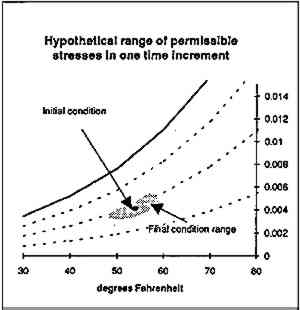EFFECTS OF CLIMATE CONTROL ON THE MUSEUM BUILDING ENVELOPEWILLIAM ROSE
8 HEAT AND MOISTURE STORAGEAll of the above analysis is steady state, that is, it ignores changing conditions. The impact of changing conditions depends on the heat and moisture storage capacity of the materials in the assembly. Mathematical models exist, but as they grow in complexity, they often become computationally unstable and thus less usable. It may be sufficient to know that buildings store only a small amount of heat but great amounts of water. The amount of water stored in building materials may amount to 3% to 5% of the total building mass. Buildings react to changes in thermal environments in a matter of minutes or a few hours. Buildings react to changes in the moisture environment in a matter of days or a few weeks. Much concern has been expressed for thermal and moisture shocks to artifacts and building materials. This paper does not attempt to ascribe a value to acceptable or unacceptable shocks, but the psychrometric technique illustrated does allow a permissible shock “envelope” to be portrayed visually (see fig. 11). From an initial point, the zone of permissible conditions after one time increment could be shown on a psychrometric chart. That zone would probably have a shape somewhat like the one shown, which follows roughly a line of constant moisture content.
Mechanical stresses in materials are usually a consequence of dimensional changes resulting from differential thermal and moisture changes in materials. This paper will not attempt to analyze these effects, but they can be illustrated with an example. In one museum several artifacts from a collection were damaged overnight due to climate control problems. Slip had fallen from several ceramic objects, and paint had peeled from polychromed wood. Upon investigation, it turned out that the indoor temperature had grown gradually colder by about 5�F over several days due to a malfunction in the mechanical controls. A disgruntled building user then vandalized the thermostat and elevated the indoor temperature quickly. The effect on the artifacts could be explained using the “popcorn” analogy (fig. 12). The gradual cooling allowed an increase in the moisture content of the material, with no effect on the outside coating. However, the rapid reheating permitted an increase in the vapor pressure inside the artifact, and the pressure could not be relieved quickly because of the relatively impermeable coating. The coating then gave way. In this same way, popcorn can be chilled in the refrigerator to achieve a high moisture content and then heated to achieve the maximum popping of the kernels. |
